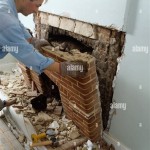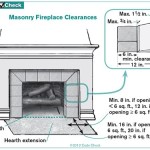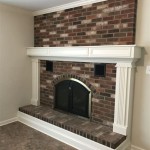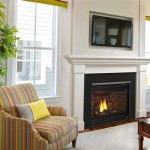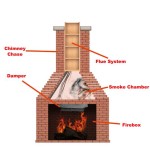Reclaimed Wood Fireplace Surround: A Sustainable and Stylish Choice
The fireplace, traditionally the heart of the home, serves as a focal point for gathering and relaxation. A fireplace surround enhances this central feature, contributing significantly to the overall aesthetic of the room. Among the various materials available for fireplace surrounds, reclaimed wood presents a compelling option, combining visual appeal with environmental consciousness. This article explores the benefits, considerations, and installation aspects of using reclaimed wood for a fireplace surround.
Reclaimed wood refers to timber that has been previously used for construction or other purposes and is subsequently salvaged for reuse. This salvaged wood often comes from sources such as old barns, factories, warehouses, and even deconstructed homes. Instead of being discarded, the wood is repurposed, giving it a new lease on life and preventing it from ending up in landfills. The use of reclaimed wood for architectural elements like fireplace surrounds has gained considerable popularity due to its unique character, sustainable qualities, and the story it carries.
The Allure of Reclaimed Wood's Aesthetic
The visual appeal of reclaimed wood is a primary driver for its use in fireplace surrounds. Unlike newly processed lumber, reclaimed wood possesses a distinct character marked by imperfections and variations that tell a story of its past. These characteristics include:
Grain Patterns and Color Variations: Reclaimed wood often exhibits tighter grain patterns and richer color variations than wood harvested from younger trees. The slow growth of trees in older forests, from which much of the reclaimed wood originates, resulted in denser wood with more pronounced grain. Moreover, exposure to the elements and the passage of time contribute to a patina that is impossible to replicate artificially. Colors can range from deep browns and reds to weathered grays and silvers, depending on the species of wood and its previous use.
Distress Marks and Imperfections: Nail holes, saw marks, knots, and other imperfections are common in reclaimed wood. These features are not considered flaws but rather contribute to its rustic charm and authenticity. Each mark tells a story of the wood's history, adding character and visual interest to the fireplace surround. These imperfections create a tactile experience that is distinct from the smooth, uniform surface of new lumber.
Unique Textures and Surface Treatments: Reclaimed wood may have undergone various surface treatments during its previous life, such as staining, painting, or weathering. These treatments can create unique textures and visual effects that enhance the aesthetic appeal of the fireplace surround. The remnants of old paint, for example, can add a touch of color and history, while weathering can create a textured surface that complements a rustic or farmhouse style.
The ability to integrate these unique characteristics into the design of a fireplace surround allows for the creation of a truly one-of-a-kind feature that reflects the homeowner's personal style and appreciation for craftsmanship.
Sustainability and Environmental Benefits
The use of reclaimed wood in construction and design offers significant environmental advantages compared to using newly harvested timber. These benefits extend beyond simply reducing landfill waste and include:
Reduced Deforestation: By repurposing existing wood, the demand for newly harvested timber is lessened, contributing to the preservation of forests. Deforestation is a major environmental concern, contributing to habitat loss, soil erosion, and climate change. Utilizing reclaimed wood helps to alleviate the pressure on forests and promote sustainable forestry practices.
Lower Energy Consumption: The process of harvesting, milling, and transporting new lumber requires a significant amount of energy. Reclaimed wood, on the other hand, requires relatively less energy to process and prepare for reuse. This reduced energy consumption translates to a lower carbon footprint, contributing to a more sustainable building practice.
Reduced Landfill Waste: Construction and demolition waste is a major contributor to landfills. Reclaiming wood diverts this material from landfills, reducing the strain on waste management systems and conserving valuable landfill space. This also helps to minimize the environmental impact associated with landfill decomposition, such as methane emissions.
Preservation of Old-Growth Forests: Much of the reclaimed wood available today comes from old-growth forests that were harvested decades or even centuries ago. These forests are irreplaceable ecosystems that provide critical habitat for wildlife and play a vital role in regulating the global climate. By using reclaimed wood from these forests, we are effectively extending the life of these trees and preserving their ecological value.
Choosing a reclaimed wood fireplace surround is a tangible way to demonstrate a commitment to environmental responsibility and contribute to a more sustainable future.
Considerations for Choosing and Installing Reclaimed Wood
While the benefits of using reclaimed wood for a fireplace surround are substantial, there are several important considerations to keep in mind when selecting and installing this material:
Wood Species and Availability: Reclaimed wood is available in a variety of species, each with its own unique characteristics and properties. Common species include oak, pine, maple, and fir. The availability of specific species may vary depending on the region and the source of the reclaimed wood. It is important to consider the aesthetic qualities, durability, and fire resistance of different species when making a selection.
Wood Condition and Treatment: The condition of reclaimed wood can vary significantly depending on its previous use and exposure to the elements. It is essential to carefully inspect the wood for signs of rot, insect infestation, or structural damage. The wood should be properly cleaned, dried, and treated to ensure its stability and longevity. Depending on the intended finish, the wood may need to be sanded, stained, or sealed.
Fire Safety Considerations: Fire safety is a paramount concern when installing a fireplace surround. Reclaimed wood, like any wood product, is combustible. It is crucial to ensure that the surround is installed in accordance with local building codes and regulations. Proper clearances must be maintained between the fireplace opening and the surrounding combustible materials. The use of a non-combustible mantel shelf or a heat shield may be necessary to protect the wood from excessive heat. Consulting with a qualified professional is highly recommended to ensure that the installation meets all safety requirements.
Installation Techniques and Expertise: Installing a reclaimed wood fireplace surround requires skill and experience. The wood may have uneven surfaces, irregular shapes, and hidden fasteners that can make installation challenging. Proper planning, measurement, and cutting are essential to ensure a precise and aesthetically pleasing result. It is often advisable to hire a professional carpenter or contractor with experience in working with reclaimed wood to handle the installation.
Cost Considerations: The cost of reclaimed wood can vary depending on the species, grade, and availability. In some cases, reclaimed wood may be more expensive than new lumber due to the labor and expense involved in sourcing, processing, and preparing it for reuse. However, the unique character and environmental benefits of reclaimed wood often justify the higher cost. Obtaining quotes from multiple suppliers and installers is recommended to ensure that the project stays within budget.
Sourcing Reclaimed Wood: Multiple avenues exist for sourcing reclaimed wood. Specialized reclaimed wood suppliers are a common option. These suppliers typically offer a wide selection of wood species, grades, and dimensions, and they often provide services such as cleaning, drying, and milling. Architectural salvage yards are another potential source, offering a variety of reclaimed building materials, including wood. Online marketplaces and auction sites can also be used to find reclaimed wood, but it is important to carefully inspect the wood before purchasing it. Directly contacting demolition companies or deconstruction contractors may also yield results, as they often have access to reclaimed wood from building projects.
By carefully considering these factors, homeowners can successfully incorporate reclaimed wood into their fireplace surround design, creating a beautiful, sustainable, and safe focal point for their home.

How To Create A Diy Reclaimed Wood Fireplace Surround For Less Than 100 Grand Rapids Interior Design Fuchsia

Reclaimed Wood Fireplace Create A Sunning Surround

Barnwood Fireplace Mantel The Collection

101 Reclaimed Wood Fireplace Surround Ideas Decoratoo Home Accent Wall Walls In Living Room
Fireplace Mantles Custom Made Barnwood By Century Home Renos Chr Contact Us Today 905 259 7307 Handcrafted Furnishings Timber Framing

Reclaimed Wood Mantel Elmwood Timber

Reclaimed Wood Mantle Home Fireplace Surrounds Contemporary

Artisan Crafted Rustic Fireplace Mantel 100 Year Old

Reclaimed Mantel Dakota Timber Co Fireplace Mantels

Reclaimed Wood Mantles Antique Beams And Boards
Related Posts



